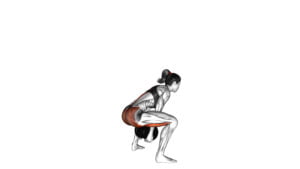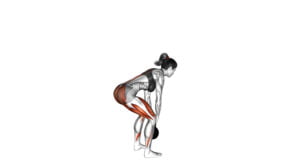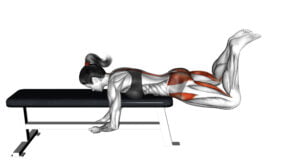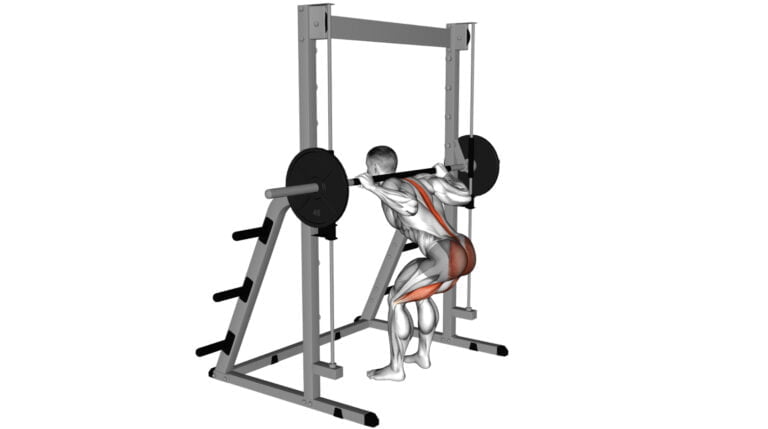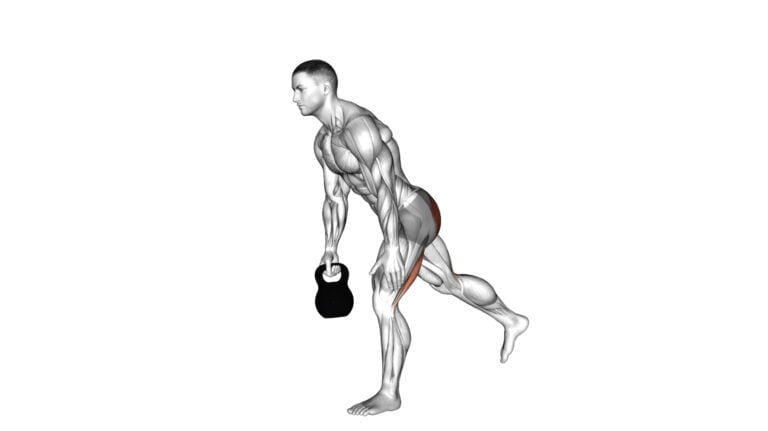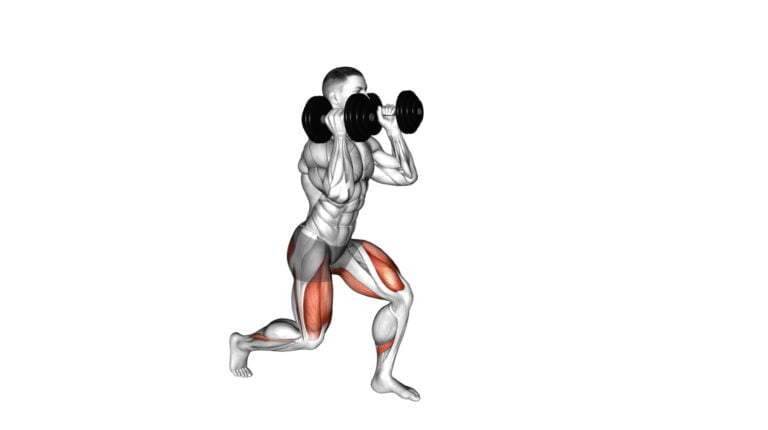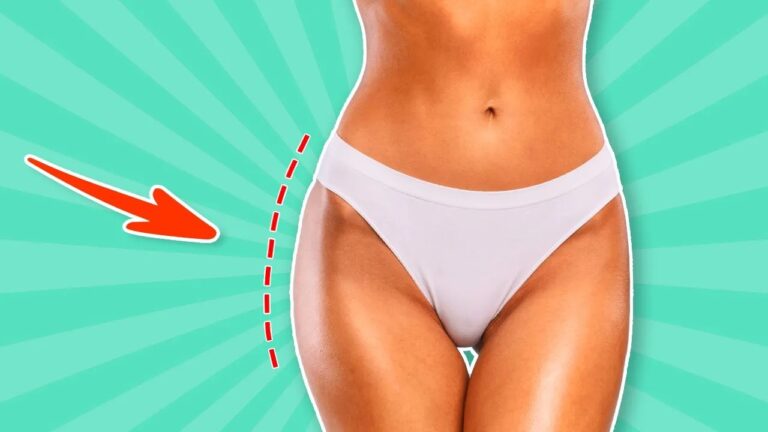10 Compound Glute Exercises To Sculpt And Strengthen Your Glutes
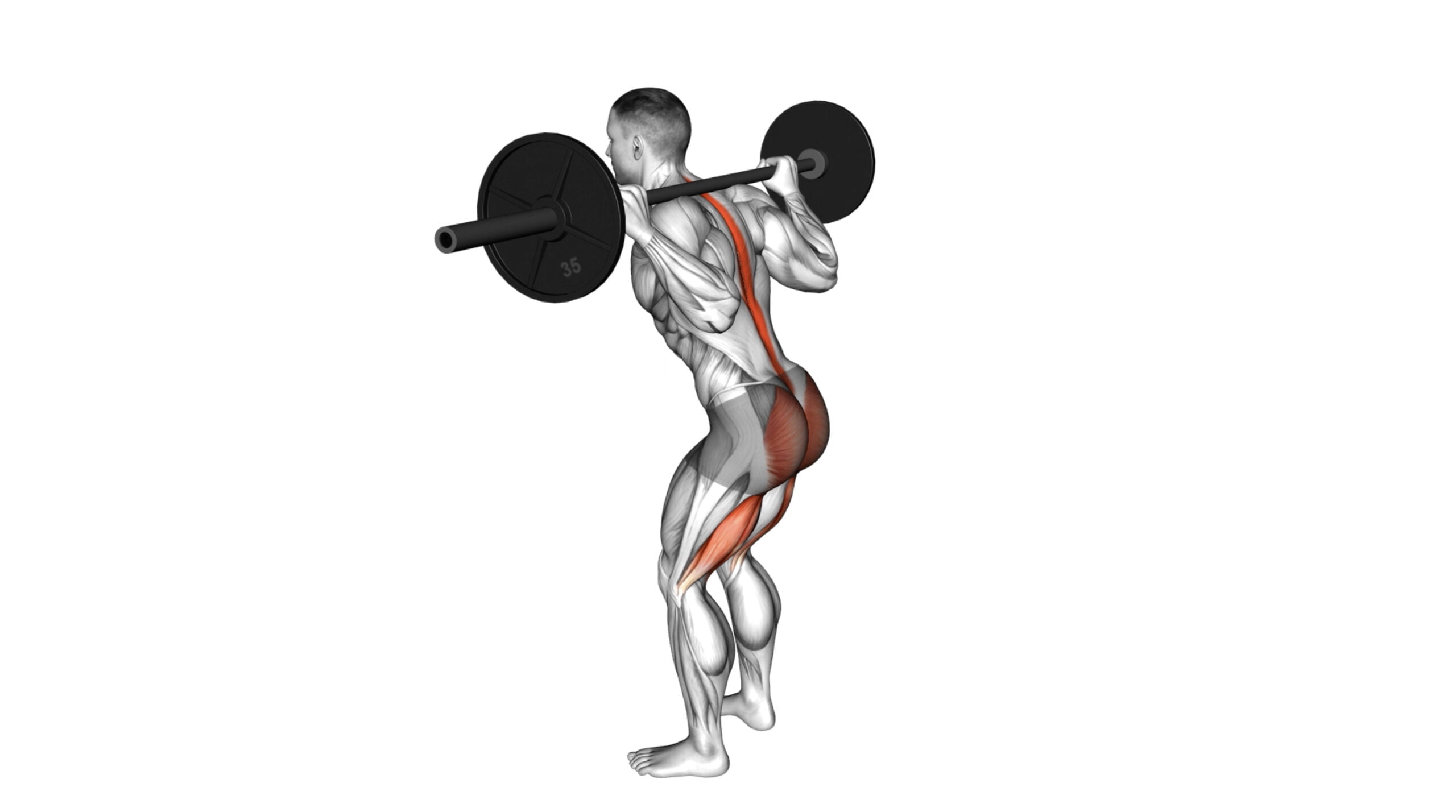
If you’re aiming to sculpt a powerhouse posterior, understanding the pivotal role of compound glute exercises is essential. Unlike isolation movements that target one muscle at a time, compound exercises engage multiple muscle groups simultaneously—boosting efficiency and effectiveness in your workouts.
As a fitness expert with over a decade of experience coaching clients toward their strength goals, I’ve seen firsthand how incorporating these multi-joint movements can transform not only glutes but also overall body composition.
Did you know that training your glute muscles through compound movements can improve posture, enhance athletic performance, and reduce the risk of injury? This article will delve into 10 key exercises designed to build strength and define shape using nothing more than dumbbells and barbells.
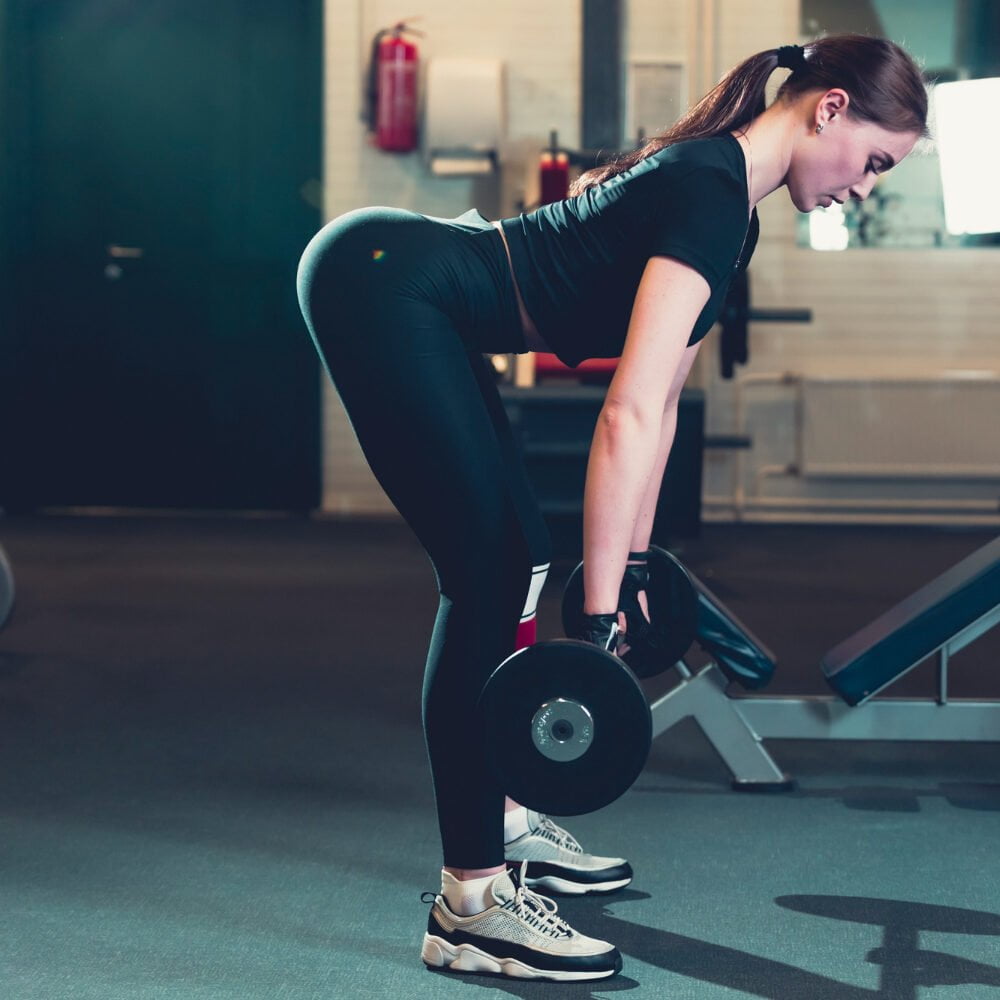
Get ready to elevate your fitness regime and reap the rewards!
Key Takeaways
- Compound glute exercises work multiple muscle groups at once, which means they’re time-efficient and can lead to more significant strength gains compared to isolation exercises.
- Incorporating compound movements like deadlifts, hip thrusts, and squats into your routine not only strengthens the glutes but also improves posture, balance, athletic performance, and reduces injury risk.
- Using free weights such as dumbbells and barbells in these exercises adds resistance that helps increase muscle growth and power in the glute region.
- To effectively build strong glutes with these exercises, ensure you maintain proper form with a focus on engaging the core and keeping a neutral spine to prevent injuries.
- Consistency is crucial; performing a variety of these 10 compound movements regularly as part of a well-rounded workout plan will help sculpt and strengthen your glutes over time.
Understanding Compound Exercises for Glutes
Compound glute exercises involve movements that engage multiple muscle groups at once, making them highly effective for overall lower body strength and development. These exercises target the glutes while also working other muscles such as the hamstrings, quadriceps, and core.
What are compound exercises?
Compound exercises are multi-joint movements that work several muscles or muscle groups at one time. A perfect example is the squat, which engages not just your gluteus maximus but also your hamstrings and quads.
These powerhouse moves demand more energy, which can lead to significant muscle growth and strength gains throughout your entire body. Since they simulate real-world motions like lifting groceries or climbing stairs, they’re a functional way to train for everyday activities while also improving balance and coordination.
Including compound exercises in your routine means you’ll get a full-body workout in less time than if you focused on isolation exercises alone. They energize multiple parts of the body simultaneously, so you get heart-pumping cardiovascular benefits along with muscle-building effects.
Exercises such as deadlifting target not only the major muscles of the lower leg but also challenge core strength, ensuring that every rep gets you closer to achieving those solid glutes and a sturdy back.
Engaging various muscle fibers means better efficiency in your workouts and leads directly to improved overall fitness levels.
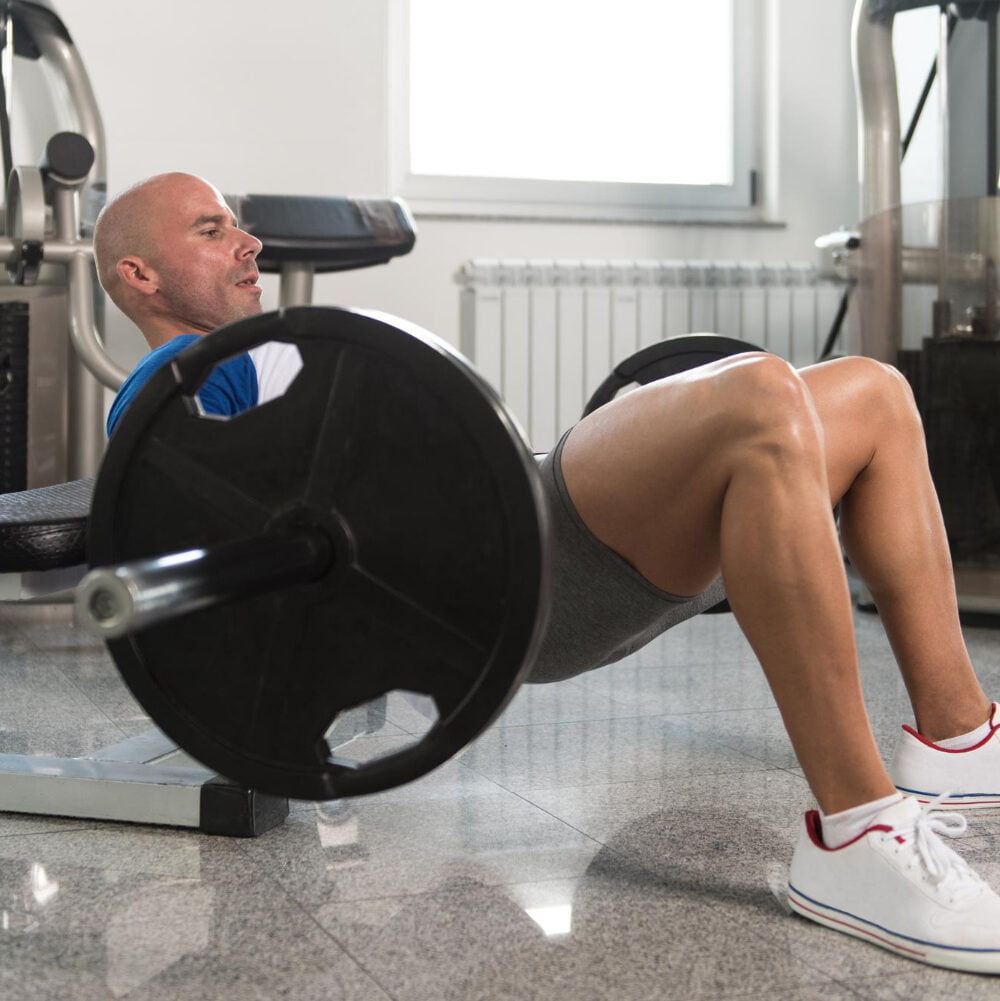
Benefits of compound exercises for glutes
Building on the foundation of what compound exercises are, let’s dive into how they can specifically turbocharge glute development. These multifaceted movements recruit several muscle groups at once, ensuring your glutes work in concert with other parts of your body.
This means more bang for your buck in every workout; you’re not just targeting the gluteus maximus but also engaging the supportive muscles like hamstrings and lower back. It’s a full-on assault to build strength and power that translates into everyday activities.
Compound exercises such as Romanian deadlifts and Bulgarian split squats offer a dynamic route to hypertrophy – essentially muscle growth – which is key for sculpting shapely buttocks.
Moreover, these exercises enhance flexibility around the hip joints and bolster stability through the pelvis. Think about it: strong glutes contribute to improved posture, better performance in sports, and reduced risk of injury all over—not just your backside! So while you’re hoisting weights doing barbell squats or powering through sumo deadlifts, know that each rep is a step towards building robust glutes capable of taking on life’s challenges head-first.
Top 10 Compound Glute Exercises with Dumbbells and Barbell
Get ready to sculpt and strengthen your glutes with these top compound glute exercises using dumbbells and barbells. These exercises target multiple muscle groups at once, making them incredibly effective for building strength and size in your glutes.
1. Dumbbell Stiff Leg Deadlift
The Dumbbell Stiff Leg Deadlift targets your glutes, including the often-overlooked gluteus minimus, as well as your hamstrings and lower back. To perform this muscle-growing powerhouse exercise, stand with feet hip-width apart holding dumbbells in front of your thighs.
Keep a slight bend in the knees and hinge at the hips to lower the weights along your shins until you feel a stretch in your hamstrings; then brace your core and lift back up by pushing your hips forward.
This move is not just for bodybuilders or powerlifters but anyone looking to build strength training into their routine.
Mastering this lift can enhance other activities like squatting, conventional deadlifts, and even Olympic lifts such as snatches. It’s crucial to maintain a flat back throughout the movement to prevent injury and ensure maximal activation of the targeted muscle groups.
By consistently incorporating free weights like dumbbells into exercises such as stiff leg deadlifts, you’re setting up yourself for greater stability and muscular development across all planes of motion.
2. Dumbbell Single Leg Glute Bridge
To perform a dumbbell single leg glute bridge, lie on your back with knees bent and feet flat on the ground. Hold a dumbbell over your hips and raise one leg off the ground. Push through your heel to lift your hips until there’s a straight line from shoulders to knees.
Lower down and repeat before switching legs.
By engaging one leg at a time, you can target each glute individually for better muscle activation and strength development in each side of your body. This exercise also improves stability and balance while adding an extra challenge to regular glute bridges with added weight resistance from the dumbbell.
3. Dumbbell Reverse Hyperextension on Bench
Lying face down on the bench, hold a dumbbell between your feet. Keep your legs straight and slowly lift them upward until they are in line with your body. Pause briefly at the top before lowering your legs back down under control.
This exercise primarily targets the hamstrings and glutes while also engaging the lower back to stabilize the movement.
For an added challenge, increase the weight of the dumbbell or incorporate pauses at different points in the movement to intensify muscle engagement. The Dumbbell Reverse Hyperextension on Bench is an effective way to build strength and stability in key muscles of the posterior chain, supporting improved athletic performance and reducing risk of injury during physical activities.
4. Dumbbell Hyperextension
Transitioning from the Dumbbell Reverse Hyperextension on Bench, we move to the Dumbbell Hyperextension. This exercise primarily targets your lower back muscles as well as the glutes.
To perform this movement, start by lying face down on a hyperextension bench with your upper thighs resting against the pad and your feet anchored under the footpads. Hold a dumbbell securely against your chest and slowly bend forward at your waist until you feel a stretch in your hamstrings.
Then, raise your torso back up until it is in line with your lower body, using mainly your lower back muscles. Remember to keep a slow and controlled pace throughout the movement to maximize muscle engagement.
5. Dumbbell Frog Hip Thrust
The dumbbell frog hip thrust is a powerful exercise targeting the glutes, hamstrings, and lower back. Begin by lying on your back with knees bent and feet flat on the floor, bring the soles of your feet together and let your knees fall open to the sides.
With a dumbbell resting on your hips for added resistance, raise your hips towards the ceiling while squeezing your glutes at the top of the movement. Lower yourself back down in a controlled manner and repeat for desired reps.
This exercise effectively activates the gluteus maximus, providing an excellent way to boost strength and muscle development in this area. Additionally, it helps improve overall hip extension power which can have beneficial effects on athletic performance such as running or jumping.
6. Barbell Glute Bridge
How to perform the Barbell Glute Bridge exercise? Position your upper back against a bench and rest a barbell over your hips. Plant your feet firmly on the ground, then raise your hips until they form a straight line with your knees and shoulders.
Squeeze your glutes at the top of the movement to maximize activation.
To intensify this exercise, consider adding resistance by placing a weight plate or dumbbell on top of your lower abdomen. This will increase the challenge for your glutes, further enhancing muscle growth and strength.
7. Barbell Hip Thrust
Transitioning from the Barbell Glute Bridge, the Barbell Hip Thrust is another highly effective compound exercise for targeting and strengthening the glutes. This movement requires you to use a barbell placed across your hips as you sit on the ground with your knees bent and feet flat.
With an upward thrust of the hips, you engage your gluteal muscles to lift the weight. This powerful exercise effectively isolates and activates the glutes to promote muscle growth and strength.
By incorporating barbell hip thrusts into your routine, you can specifically target and sculpt your glutes while also enhancing overall lower body strength. This exercise not only helps in building stronger glutes but also contributes to improved athletic performance and functional movement patterns.
8. Barbell Good Morning
Transitioning from the powerful Barbell Hip Thrust, the Barbell Good Morning is an excellent compound glute exercise that also engages the lower back and hamstrings. To perform this exercise, start by standing with your feet shoulder-width apart and placing a barbell across your upper back.
Keeping your back straight, hinge at the hips while bending forward until your torso is parallel to the floor, then return to the starting position using your glutes and hamstrings.
Engage in proper form to ensure maximal activation of your glutes and avoid strain on other muscle groups. With consistent practice, the Barbell Good Morning can significantly strengthen and sculpt your glutes while improving overall lower body strength.
9. Barbell One Arm Side Deadlift
The barbell one arm side deadlift targets the glutes and hamstrings, as well as the core muscles for stability. With a firm grip on the barbell in one hand, lower your torso to one side while keeping your back straight and knees slightly bent.
Push through your heel to return to a standing position, engaging the glutes throughout the movement. This exercise helps improve unilateral strength and stability while effectively activating the glute muscles.
These compound exercises are essential for maximizing muscle engagement and promoting balanced strength development in both sides of the body. By incorporating movements like the barbell one arm side deadlift into your workout routine, you can enhance overall glute development and functional strength.
10. Barbell Rack Pull
The barbell rack pull is a dynamic compound exercise that targets the glutes, hamstrings, and lower back. This movement involves lifting the barbell from an elevated position, typically just below knee level, using a hip hinge motion to engage and strengthen the posterior chain muscles effectively.
Executing the barbell rack pull with proper form and focus can enhance overall strength and power in your lower body while promoting muscle growth in the targeted areas. By incorporating this exercise into your routine, you can elevate your performance in various activities such as weightlifting, powerlifting, or athletics.
How to Incorporate these Exercises into a Workout Routine
Incorporating compound glute exercises into your workout routine can help you sculpt and strengthen your glutes effectively. To learn more about the frequency, sets/reps, sample workout splits, proper form tips, and common mistakes to avoid, keep reading!
Frequency and Sets/Reps
To get the best results from these compound glute exercises, it’s essential to consider the frequency and sets/reps for your workouts. Here’s a breakdown of how to incorporate these exercises into your routine:
- Dumbbell Stiff Leg Deadlift: Perform 3-4 sets of 8-12 reps.
- Dumbbell Single Leg Glute Bridge: Aim for 3-4 sets of 10-15 reps per leg.
- Dumbbell Reverse Hyperextension on Bench: Do 3 sets of 12-15 reps.
- Dumbbell Hyperextension: Aim for 3 sets of 10-12 reps.
- Dumbbell Frog Hip Thrust: Perform 3-4 sets of 10-12 reps.
- Barbell Glute Bridge: Do 4 sets of 8-10 reps, using challenging weight.
- Barbell Hip Thrust: Aim for 4 sets of 8-12 reps with proper form and control.
- Barbell Good Morning: Perform 3 sets of 8-10 reps while focusing on hip hinge movement.
- Barbell One Arm Side Deadlift: Try doing 3 sets of 10-12 reps per arm.
- Barbell Rack Pull: Do a maximum of 4 heavy sets in the range of 6-8 reps.

Sample Workout Splits for Glutes
To effectively incorporate these compound glute exercises into your workout routine, consider the following sample workout splits for glutes:
Split 1: Focus on hip thrust variations and deadlifts
- Dumbbell Stiff Leg Deadlift: 3 sets of 10 reps
- Barbell Hip Thrust: 4 sets of 12 reps
- Barbell Good Morning: 3 sets of 8 reps
Split 2: Utilize a mix of hip thrusts, glute bridges, and reverse hyperextensions
- Dumbbell Frog Hip Thrust: 3 sets of 12 reps
- Barbell Glute Bridge: 4 sets of 10 reps
- Dumbbell Reverse Hyperextension on Bench: 3 sets of 15 reps
Split 3: Emphasize single-leg exercises for increased activation
- Dumbbell Single Leg Glute Bridge: 4 sets of 10 reps per leg
- Barbell One Arm Side Deadlift: 3 sets of 12 reps per arm
- Barbell Rack Pull: 4 sets of 8 reps
Tips for Proper Form
Focus on maintaining a neutral spine throughout the movement to prevent strain and injury. Engage your core muscles to stabilize your body and support your lower back during these compound glute exercises.
Keep your chest up, shoulders back, and knees aligned with your toes to ensure proper alignment and maximize the effectiveness of each exercise. Maintain control through the entire range of motion, avoiding jerky or uncontrolled movements that could compromise form or lead to injury.
Common Mistakes to Avoid
After learning about the tips for proper form, it’s essential to be aware of common mistakes that can hinder your progress. Avoid these errors to maximize your training and prevent injury:
- Arched Back: Maintain a neutral spine position during each exercise to avoid straining your lower back.
- Using Too Much Weight: Ensure that you can perform the exercises with proper form before increasing the weight to prevent sacrificing technique for heavier loads.
- Lack of Hip Engagement: Focus on engaging your glutes throughout the entire range of motion to effectively target the muscles.
- Rushing Through Reps: Perform each movement with control and avoid rushing through repetitions, as this can lead to poor form and reduced effectiveness.
- Neglecting Warm-Up: Properly warm up your muscles before engaging in compound glute exercises to reduce the risk of injury and enhance performance.
- Overlooking Recovery: Allow adequate time for rest and recovery between workout sessions to optimize muscle growth and prevent overtraining.
- Inadequate Range of Motion: Ensure that you are performing each exercise through its full range of motion to maximize muscle activation and strength gains.
- Poor Breathing Technique: Focus on maintaining steady breathing throughout each exercise, avoiding breath-holding or shallow breaths which can impact performance.
- Incorrect Foot Placement: Pay attention to foot positioning during exercises such as hip thrusts and deadlifts, ensuring stable footing for optimal execution.
Conclusion
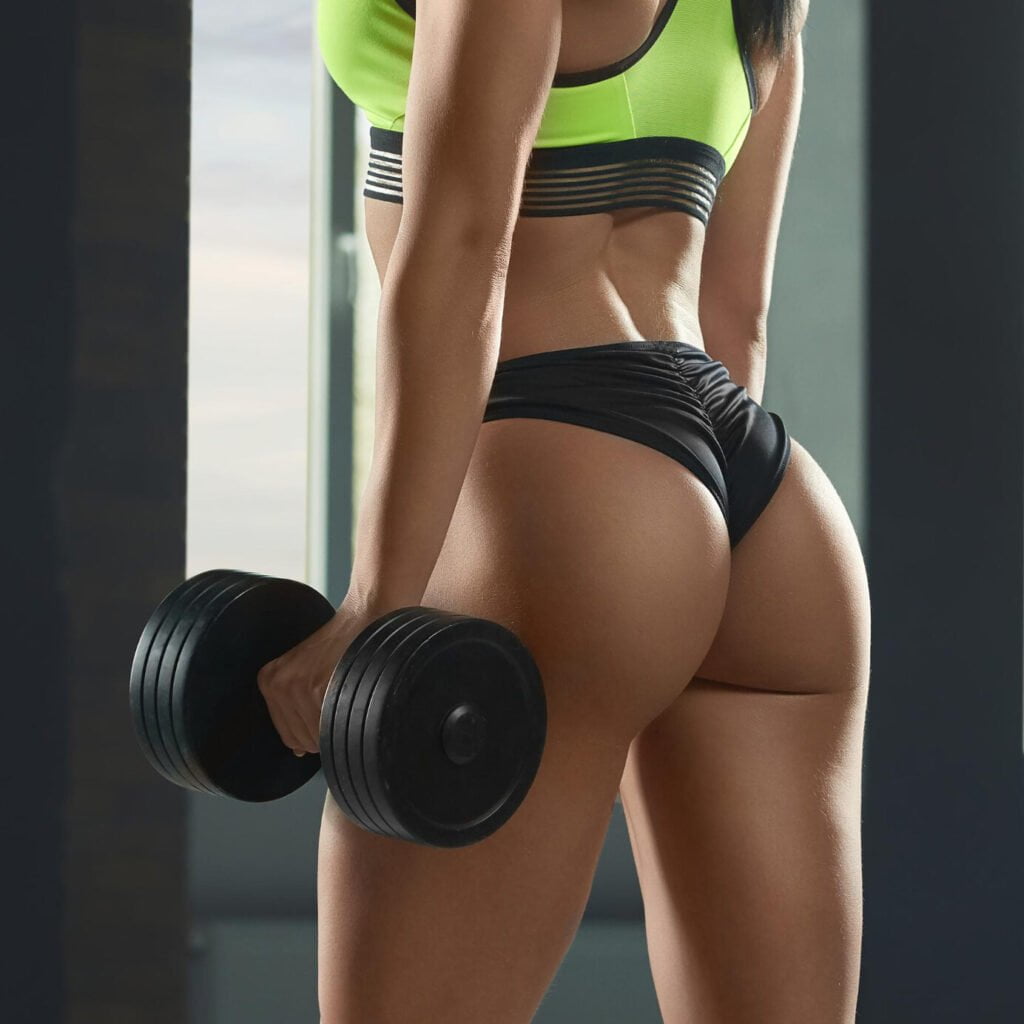
In conclusion, these 10 compound glute exercises offer a practical and efficient way to sculpt and strengthen your glutes with dumbbells and barbells. Emphasizing the importance of incorporating these exercises into your workout routine can lead to significant improvements in muscle tone and strength.
By following proper form and incorporating these movements into a consistent fitness regimen, individuals can expect impactful results over time. To further enhance your understanding of glute training, consider exploring additional resources or seeking guidance from fitness professionals for personalized advice.
Remember, consistency is key on the journey to achieving strong, sculpted glutes that support overall physical well-being.
FAQs
1. What makes compound glute exercises effective for strengthening?
Compound glute exercises work multiple muscle groups at once, leading to improved strength and muscular contraction throughout your lower body, not just your glutes.
2. Can I use weights like kettlebells or barbells to enhance these exercises?
Absolutely! Incorporating weights such as kettlebells or barbells can intensify your workout, making movements like back squats or deadlifts more challenging and effective.
3. Are there any specific compound moves that target the glutes and pelvic area?
Movements like hip abduction, standing squats, and walking lunges activate the muscles in the pelvic region while focusing on toning those glutes.
4. How do Olympic weightlifters train their glutes with compound exercises?
Olympic weightlifters often perform power cleans and plyometric training which are dynamic compound movements that build explosive strength in the glutes.
5. What can I do to alleviate muscle soreness after doing intense compound exercises?
To ease muscle soreness (DOMS), consider activities that increase blood flow, such as light stretching or using techniques like blood flow restriction training under professional guidance.
6. If I’m new to lifting weights for my lower body, where should I start?
Beginners should start with fundamental movements like squats with a chair for support—this helps you get accustomed to knee joint flexing and proper form before progressing onto lifting heavier weights.

Author
Years ago, the spark of my life’s passion ignited in my mind the moment I stepped into the local gym for the first time. The inaugural bead of perspiration, the initial endeavor, the very first surge of endorphins, and a sense of pride that washed over me post-workout marked the beginning of my deep-seated interest in strength sports, fitness, and sports nutrition. This very curiosity blossomed rapidly into a profound fascination, propelling me to earn a Master’s degree in Physical Education from the Academy of Physical Education in Krakow, followed by a Sports Manager diploma from the Jagiellonian University. My journey of growth led me to gain more specialized qualifications, such as being a certified personal trainer with a focus on sports dietetics, a lifeguard, and an instructor for wellness and corrective gymnastics. Theoretical knowledge paired seamlessly with practical experience, reinforcing my belief that the transformation of individuals under my guidance was also a reflection of my personal growth. This belief holds true even today. Each day, I strive to push the boundaries and explore new realms. These realms gently elevate me to greater heights. The unique combination of passion for my field and the continuous quest for growth fuels my drive to break new ground.

